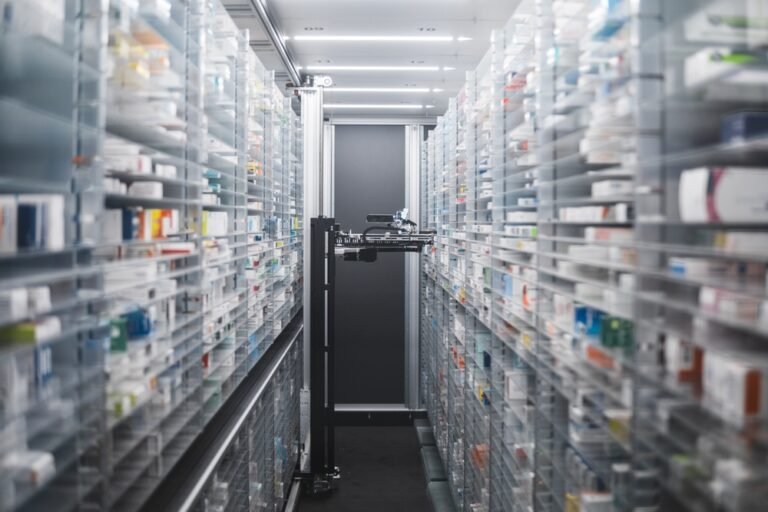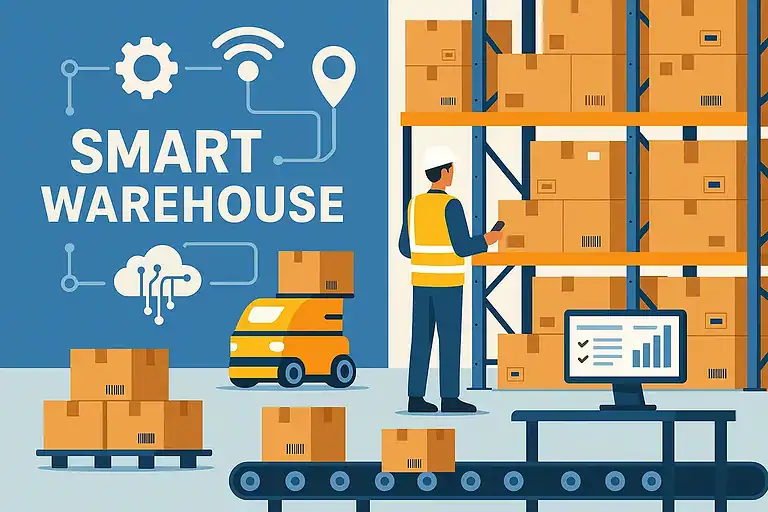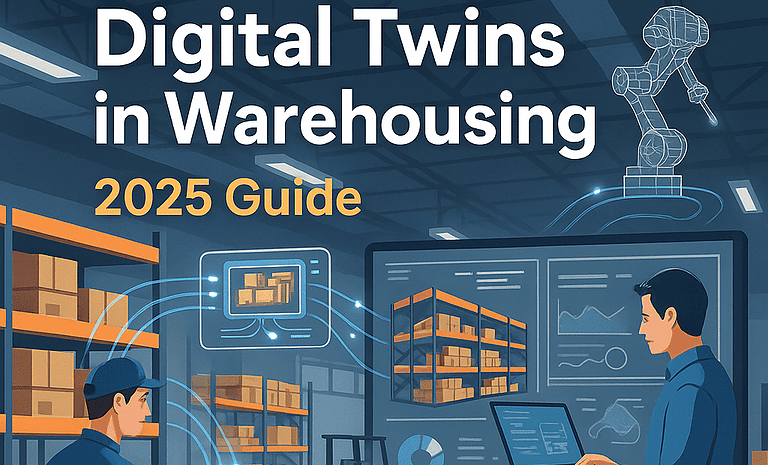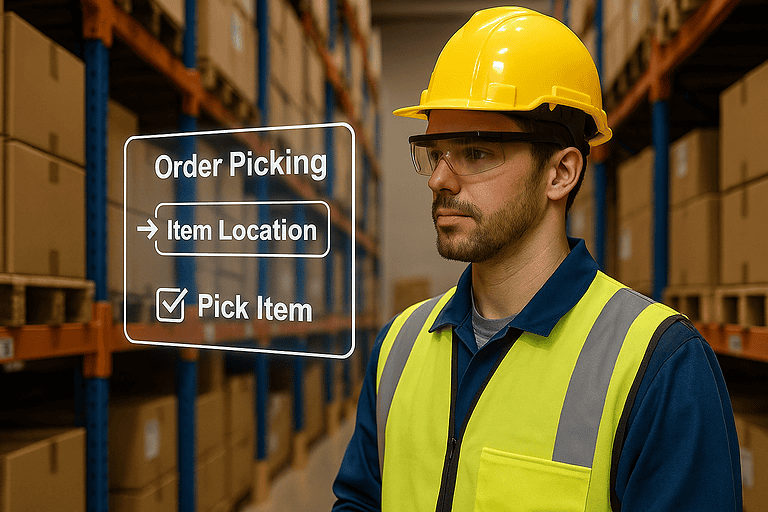RFID in Warehouse Management: Powerful Tech for 2025
Imagine knowing exactly where every item in your warehouse is at all times. No more lost inventory, no more time-wasting searches. Sound like a dream? With RFID, it’s today’s reality.
RFID is changing the game in warehouse management. But what is RFID?

RFID stands for Radio Frequency Identification. It’s a technology that uses radio waves to track and identify items, providing unique identification and efficiency. Think of it as a supercharged barcode. RFID is utilized across various industries, from retail to healthcare, due to its advantages over traditional systems, including real-time tracking, reduced errors, and cost-effectiveness.
In 2024, an increasing number of warehouses are expected to adopt RFID technology. Why? Because it makes everything easier. It tracks inventory in real-time, reduces errors, and saves time and money.
RFID isn’t new. But it’s getting better and cheaper. Now, even small warehouses can use it. This post will examine how RFID is revolutionizing warehouse management.
We’ll examine its benefits, challenges, and prospects. Whether you run a big distribution center or a small stockroom, RFID could be your next big move.
Ready to see how RFID can transform your warehouse? Let’s dive in.
Understanding RFID Technology

Radio Frequency Identification (RFID) is an advanced technology that uses radio waves to identify and track objects or individuals without direct contact. This innovative system consists of three essential components: a tag, a reader, and an antenna. Let’s dive deeper into how it works:
RFID Tag Technology
These small electronic devices, often no larger than a grain of rice, can be attached to or embedded in products, animals, or even people.
Each tag contains a tiny RFID chip and an antenna. The RFID chip stores identifiable information and can be used in various applications, such as secure identification in government documents, animal tracking, human implantation, and sports performance measurement.
The chip stores a unique identifier and potentially other data about the item it’s attached to, such as product details, expiration dates, or ownership information.
Tags can be as simple as a sticker or as complex as a rugged, encapsulated device designed for harsh environments.
RFID Readers
Also known as interrogators, RFID readers emit radio waves at a specific frequency.
The waves create an electromagnetic field.
This field serves two purposes: a) It provides power to passive RFID tags (more on this later). b) It acts as a medium for data transfer between the tag and the reader.
RFID readers can be handheld devices, fixed units at checkpoints, or even integrated into smartphones. The selection criteria for RFID readers include range, frequency, and compatibility with tags. Different types of RFID readers, such as active, passive, and semi-passive, serve various functions within RFID systems, which are crucial for activating tags, capturing data, and facilitating communication in applications like retail and inventory management.
Data Transfer
When an RFID tag enters the electromagnetic field of a reader, it’s activated.
The tag then transmits its stored information back to the reader.
This entire process happens almost instantaneously, often in milliseconds.
The reader decodes the data and sends it to a computer system for processing.
Types of RFID Tags
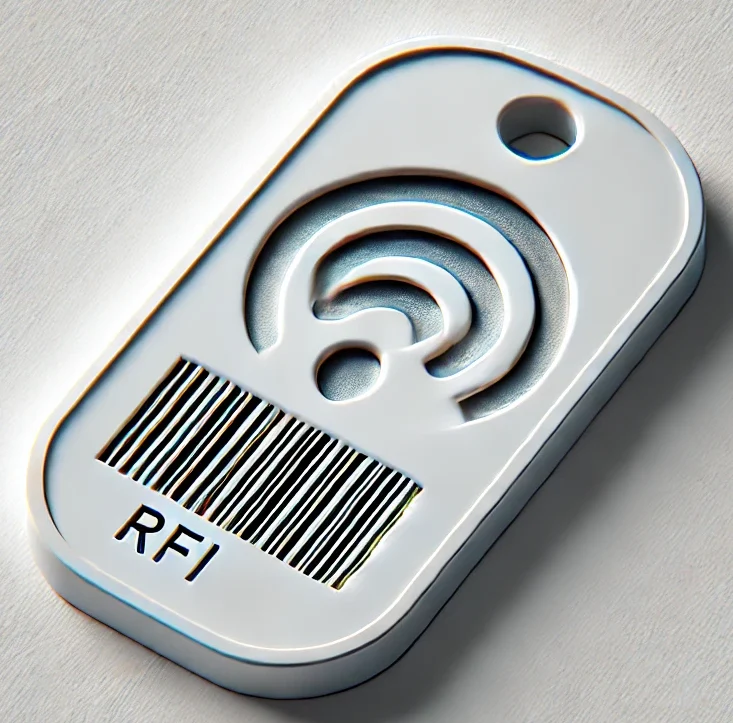
There are two main categories of RFID tags, each with its own strengths and use cases:
Passive RFID Tags
These are the most common and cost-effective RFID tags.
They don’t have their power source.
Instead, they draw power from the electromagnetic field created by the reader.
Advantages:
Very cheap to produce (often cents per tag)
Small and lightweight
Can last indefinitely without maintenance
Limitations:
Short read range (typically a few centimeters to a few meters)
Limited data storage capacity
Common uses: Inventory tracking, access cards, product labels
Active RFID Tags
These more sophisticated tags have their power source, usually a small battery.
They can actively transmit their signal to a reader.
Advantages:
Much longer read range (up to 100 meters or more)
Larger data storage capacity
It can include sensors for temperature, motion, etc.
Limitations:
More expensive than passive tags
Larger in size
Limited battery life (though often several years)
Common uses: Tracking high-value assets, monitoring shipments in transit, vehicle toll collection systems
Understanding these basics of RFID technology sets the foundation for exploring its numerous applications across various industries, from retail and logistics to healthcare and security.
RFID vs. Barcodes: What’s the Difference?
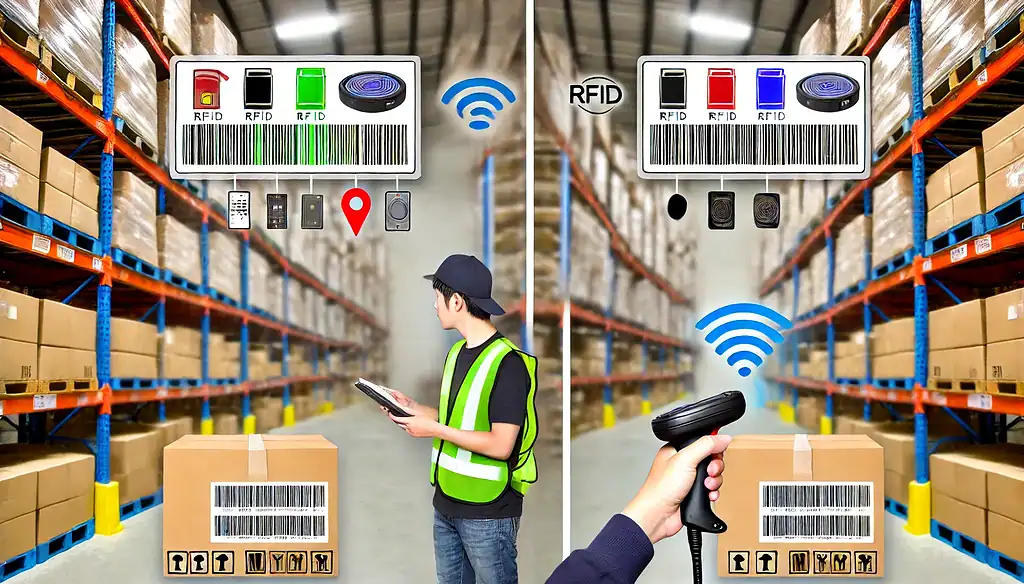
While RFID and barcodes are used for identifying and tracking items, they have distinct characteristics that make them suitable for different applications.
You might wonder, “Why not just use barcodes?” It’s a valid question, as barcodes are widely used and familiar. However, RFID technology offers several significant advantages:
1. No Line of Sight Required
– Barcodes:
- Must be visually exposed to be scanned
- Require direct line-of-sight between the scanner and the barcode
- It can be time-consuming to locate and orient for scanning
– RFID:
- It can be read through various materials, including cardboard, plastic, and fabric
- Tags can be embedded inside items or packaging
- Allows for faster and more efficient scanning of inventory or shipments
2. Multiple Simultaneous Reads
– Barcodes:
- Must be scanned one at a time
- The process can be slow for large inventories
– RFID:
- Can read multiple tags simultaneously
- Capable of scanning hundreds of items per second
- Greatly speeds up processes like inventory counts or checkout
3. Data Storage Capacity
– Barcodes:
- Limited to a small amount of static information
- Typically, store a product identifier that links to a database
– RFID:
- Can store much more data directly on the tag
- Some tags can be rewritten with updated information
- It can include details like production date, expiration, maintenance history, etc.
4. Durability and Longevity
– Barcodes:
- Printed on surfaces, susceptible to wear and tear
- It can become unreadable if scratched, smudged, or damaged
– RFID:
- Tags are often encased in protective materials
- Can withstand harsh environments, including extreme temperatures and moisture
- Remain functional even when not visible or partially damaged
5. Read Range
Barcodes:
Typically require proximity for scanning (a few inches to a few feet)
RFID:
Passive tags can be read from several feet away
Active tags can be detected from 100 feet or more
UHF RFID tags, operating under specific standards, offer unique read ranges extending up to 30 feet, making them suitable for various applications compared to other frequencies.
6. Data Security
– Barcodes:
- Easy to replicate or counterfeit
- Limited security features
– RFID:
- Can include encryption and authentication measures
- More difficult to counterfeit
- Some tags allow for password protection of data
7. Cost and Complexity
– Barcodes:
- Very low cost to implement
- Simple technology, widely understood
– RFID:
- Higher initial investment for readers and infrastructure
- Tags are more expensive than printed barcodes
- Offers more advanced features and capabilities
8. Flexibility and Reusability
– Barcodes:
- Static, once printed, cannot be changed
– RFID:
- Some types can be rewritten multiple times
- Allows for updating information throughout an item’s lifecycle
While RFID technology offers numerous advantages, it’s important to note that barcodes still have their place. The choice between RFID and barcodes often depends on specific needs, budget constraints, and the nature of the items being tracked.
Many businesses use a combination of both technologies to maximize efficiency and cost-effectiveness across different applications.
Benefits of RFID in Warehouse Management
RFID technology has revolutionized warehouse management, offering numerous advantages and significantly improving efficiency, accuracy, and overall operations.
By incorporating asset-tracking RFID technology, businesses can efficiently monitor and manage their valuable assets. This technology enables real-time identification and location tracking of assets, improving asset utilization, reducing loss or theft, and enhancing operational efficiency.
Let’s delve deeper into why RFID is so valuable for warehouses:
Better Inventory Accuracy:
Traditional methods: Manual counting or barcode scanning can lead to human errors.
RFID advantage: Automated, highly accurate counting, one study found RFID can boost inventory accuracy to 99.9%
Impact: Reduced stockouts and overstock situations, improved financial reporting accuracy, better decision-making based on reliable data
Example: A major retailer implemented RFID and reduced out-of-stock by 16%, increasing sales by over $100 million.
Real-Time Tracking:
RFID enables: Instant location of items within the warehouse, continuous monitoring of inventory movements
Benefits: Reduced search times for specific items, improved warehouse layout optimization, enhanced ability to respond to urgent orders or recalls
Example: A distribution center reduced time spent searching for misplaced items by 80% after implementing RFID.
Faster Operations:
RFID accelerates: Receiving processes, order picking, packing, shipping, and dispatch
Improvements: Some warehouses report 30% faster processing times, reduced bottlenecks in warehouse workflows
Example: An e-commerce fulfillment center cut order processing time from 48 to 12 hours using RFID.
Lower Labor Costs:
RFID automates: Inventory counts, asset tracking, data entry
Benefits: Reduced need for manual labor in routine tasks, reallocation of staff to value-added activities, decreased overtime costs for inventory management
Example: A retail distribution center reduced labor costs by 25% after implementing RFID for inventory management.
Reduced Theft and Loss:
RFID enhances security: Real-time monitoring of inventory movement, immediate alerts for unauthorized removals, better tracking of items throughout the supply chain
Impacts: Deterrence of internal and external theft, quicker identification of loss patterns, improved ability to locate misplaced items
Example: A luxury goods warehouse reduced shrinkage by 60% in the first year after implementing RFID security measures.
Improved Customer Service:
RFID enables: More accurate order fulfillment, faster response to customer inquiries, better promise management for deliveries
Benefits: Reduced “out of stock” situations, increased customer satisfaction and loyalty, ability to offer more precise delivery estimates
Example: An automotive parts distributor improved on-time delivery rates from 92% to 99% after implementing RFID tracking.
Enhanced Supply Chain Visibility:
RFID provides: End-to-end tracking of items from manufacturer to end customer, better coordination with suppliers and distributors
Advantages: Improved forecasting and demand planning, reduced lead times for restocking, enhanced ability to manage product recalls if necessary
Example: A food distributor reduced spoilage by 20% by using RFID to manage first-in-first-out (FIFO) inventory rotation effectively.
Data-Driven Decision Making:
RFID generates: Rich, real-time data on inventory levels and movements, detailed insights into warehouse operations
Enables: More accurate demand forecasting, optimized inventory levels, continuous improvement of warehouse processes
Example: A fashion retailer used RFID data to optimize its product mix, increasing sell-through rates by 15%.
By leveraging these benefits, warehouses can significantly improve operations, reduce costs, and provide better customer service. While the initial investment in RFID technology can be substantial, many businesses find that the long-term benefits far outweigh the costs, leading to a strong return on investment and a more competitive position in the market.
Implementing RFID in Your Warehouse

Are you excited about the potential of RFID technology? Here’s a more detailed guide on how to get started with implementing RFID in your warehouse:
1. Assess Your Needs
Conduct a thorough analysis of your current operations:
- Identify pain points in inventory management
- Evaluate areas where efficiency could be improved
- Determine specific goals (e.g., reducing stockouts, improving accuracy)
- Consider future scalability needs
- Perform a cost-benefit analysis to justify the investment
- Example: A distribution center might aim to reduce inventory count time by 50% and improve picking accuracy to 99.9%
2. Choose Your System
Work with RFID experts or consultants:
- They can help assess your facility’s RF environment
- Recommend appropriate hardware (tags, readers, antennas)
- Suggest optimal tag placement on products
Consider factors such as:
- Types of products you’re tagging (metal, liquid, etc.)
- Read range requirements
- Environmental conditions (temperature, humidity)
Example: A cold storage warehouse might need specially designed tags that perform well in low temperatures
3. Start Small
Begin with a pilot program:
- Choose a specific area or product category
- Set clear objectives and metrics for the pilot
- Run the pilot for a defined period (e.g., 3-6 months)
Use the pilot to:
- Identify and resolve technical issues
- Refine processes and workflows
Gather data on performance improvements
Analyze results and make adjustments before implementation
- Example: A retailer might start by tagging high-value items in one department before expanding to the entire store
4. Train Your Team
Develop comprehensive training programs:
- Cover RFID basics and how the technology works
- Provide hands-on training with the new equipment
- Explain new processes and workflows
Address potential concerns or resistance to change:
- Designate RFID champions within the organization to support the transition
- Provide ongoing support and refresher training
Example: Create a series of training videos and hands-on workshops for warehouse staff on tag application and reading techniques
5. Integrate with Your Software
– Work with your IT department or external consultants to:
Integrate RFID data with your existing Warehouse Management System.
Update inventory management software to handle RFID inputs
Develop new reporting capabilities to leverage RFID data, utilizing the wealth of information and resources available within the RFID industry
- Consider middleware solutions to manage data flow between RFID hardware and your business systems
- Test the integration thoroughly before going live
- Plan for data migration and historical data management
- Example: Develop a custom dashboard that provides real-time visibility of RFID-tracked inventory movements
6. Monitor and Improve
Establish key performance indicators (KPIs) to track success:
- Inventory accuracy rates
- Order fulfillment speed
- Labor efficiency
Regularly review system performance:
- Conduct periodic audits of RFID read accuracy
- Analyze data for patterns or anomalies
Continuously optimize:
- Fine-tune reader placements and configurations
- Update software and firmware regularly
- Explore new use cases for the RFID system
Stay informed about advancements in RFID technology
- Example: Set up monthly review meetings to analyze RFID performance data and identify areas for improvement
7. Ensure Compliance and Security
Address privacy concerns:
- Develop policies for handling RFID data
- Ensure compliance with data protection regulations
Implement security measures:
- Encrypt RFID data transmissions
- Control access to RFID systems and data
Consider industry-specific compliance requirements
Example: Implement a system to deactivate RFID tags on items sold to consumers to address privacy concerns
8. Plan for Scalability
Design your initial implementation with future growth in mind:
- Choose scalable hardware and software solutions
- Plan for increased data storage and processing needs
Consider how RFID can be extended to other areas of your supply chain:
- Supplier integration
- Returns management
- Customer-facing applications
- Example: Select an RFID middleware solution that can easily accommodate additional readers and increased tag volumes as you expand the system
9. Calculate and Communicate ROI:
Track costs and benefits rigorously:
- Document all implementation and ongoing costs
- Quantify benefits in terms of cost savings and efficiency gains
Regularly report on ROI to stakeholders:
- Use concrete metrics and real-world examples
- Highlight both financial and operational improvements
- Use ROI data to justify further investments or expansions of the RFID system
- Example: Create a monthly ROI report showing how RFID has reduced labor costs, improved inventory accuracy, and increased order fulfillment speed
Implementing RFID in your warehouse is a significant undertaking, but with careful planning and execution, it can transform your operations. By following these expanded steps, you’ll be well-positioned to leverage the full potential of RFID technology, driving efficiency, accuracy, and competitiveness in your warehouse operations.
Real-World RFID Success Stories
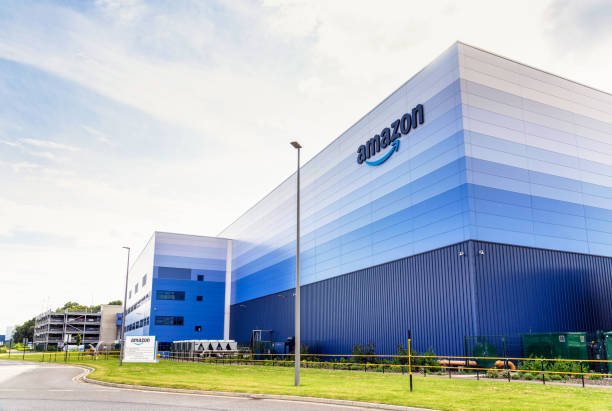
RFID technology has been transformative for businesses of all sizes across various industries. Let’s delve deeper into some success stories and add a few more examples:
Walmart
Implementation: Walmart has pioneered RFID adoption since early 2000s.
Results:
30% reduction in out-of-stock SKUs
16% decrease in manual orders
Improved inventory accuracy from 63% to 95%
Enhanced efficiencies in supply chain management through better inventory tracking and asset management
Additional benefits:
Enhanced supply chain visibility
Reduced shrinkage and improved loss prevention
Better management of perishable goods
Impact: Walmart’s RFID initiative has influenced many suppliers to adopt the technology, creating a ripple effect throughout the retail industry.
Amazon
Implementation: Amazon uses RFID extensively in its fulfillment centers.
Benefits:
Efficient management of millions of items
Crucial for fast shipping and same-day delivery services
Improved accuracy in order fulfillment
Innovative use: Amazon Go stores use RFID (along with other technologies) to enable checkout-free shopping experiences.
Plans: Exploring RFID for drone delivery and further automation in warehouses.
Small Business Win – Local Auto Parts Store
Implementation: Adopted RFID for inventory management
Results:
75% reduction in inventory counting time
Near real-time visibility of stock levels
Improved customer service with accurate stock information
Additional benefits:
Reduced labor costs associated with inventory management
Easier identification of slow-moving items
Improved order accuracy and reduced returns
Zara (Inditex)
Implementation: RFID tags on all garments in stores and distribution centers
Results:
Inventory accuracy improved to 98%
50% reduction in stock management time
Ability to restock stores twice a week instead of once
Impact: Faster response to fashion trends and customer demands
Decathlon Sports
Implementation: RFID tags on all products, self-checkout systems
Results:
99% inventory accuracy
9% increase in sales
60% faster checkout times
Additional benefits: Enhanced loss prevention and reduced shrinkage
Delta Air Lines
Implementation: RFID baggage tracking system
Results:
99.9% tracking accuracy for baggage
25% reduction in mishandled bags
Customer benefit: Real-time tracking of luggage through a mobile app
Industry impact: Setting a new standard for baggage handling in the airline industry
Honda Manufacturing
Implementation: RFID for tracking parts and work-in-progress vehicles
Results:
80% reduction in vehicle tracking labor
Elimination of manual data entry errors
Improved production efficiency
Additional benefit: Enhanced ability to manage recalls if necessary
Levi Strauss & Co.
Implementation: RFID tags on all items in select stores
Results:
100% inventory accuracy
50% reduction in out-of-stocks
Significant improvement in omnichannel capabilities
Customer benefit: Better product availability and smoother online-to-store experiences
New York City Public Library
Implementation: RFID tags on all books and media items
Results:
50% faster check-out times
Improved accuracy in returns and shelving
Enhanced security against theft
Additional benefit: Self-service kiosks for check-out and returns, freeing staff for other tasks
These success stories demonstrate the versatility and effectiveness of RFID technology across various sectors.
From retail giants to small local businesses, from manufacturing to services, RFID has proven its value in improving inventory accuracy, operational efficiency, and customer satisfaction.
The key takeaways from these examples are:
RFID can provide significant ROI when implemented correctly.
Benefits often extend beyond the initial goals, improving multiple aspects of business operations.
RFID adoption can lead to innovative business models and improved customer experiences.
The technology is scalable, benefiting both large corporations and small local businesses.
Industry leaders adopting RFID often set new standards, influencing entire supply chains and sectors.
As RFID technology continues to evolve and become more affordable, we can expect to see even more success stories across various industries in the future.
The Future of RFID in Warehouses
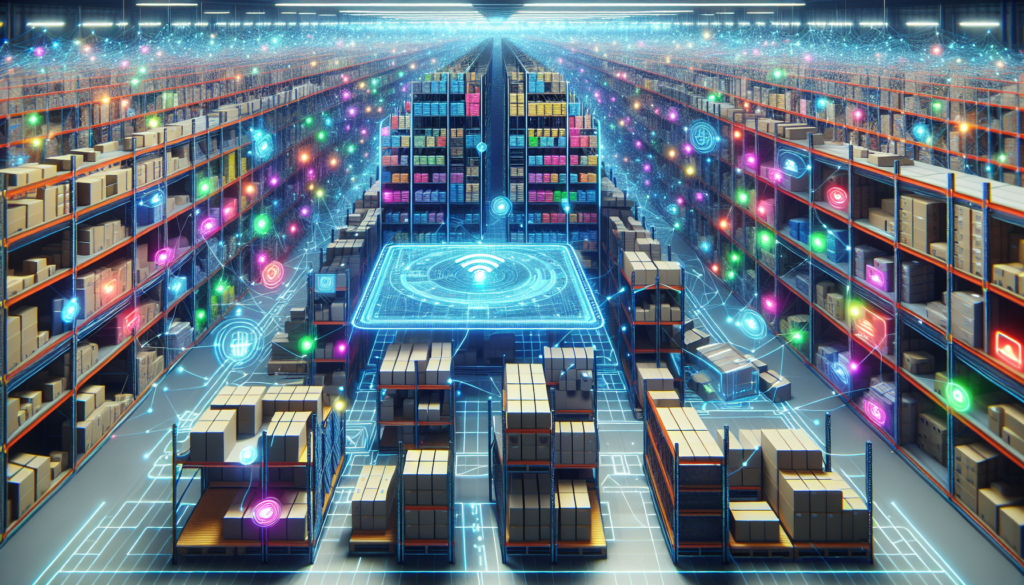
RFID technology is continuously evolving, with new advancements promising to revolutionize warehouse management further. Let’s explore these future trends in more detail:
Smaller, Cheaper RFID Tags
Current development:
- Miniaturization of RFID tags and chips
New materials and manufacturing techniques
Expected impacts:
Wider adoption across more product categories
Feasibility for tagging smaller items
Reduced implementation costs for businesses
Potential applications:
Item-level tagging for all products, not just high-value goods
Integration into packaging materials
Example: Researchers are developing printable RFID tags that could be as cheap as traditional barcodes
However, using passive RFID tags raises significant privacy concerns and security risks. Unauthorized reading of these tags can lead to tracking individuals through tags embedded in products.
This has serious implications for supply chain management and access control, where the security of RFID technology is paramount.
Smarter Analytics
Integration with AI and Machine Learning:
Real-time data processing for predictive analytics
Pattern recognition for optimizing warehouse layouts
Anomaly detection for identifying potential issues before they occur
Enhanced decision-making:
Automated inventory reordering based on consumption patterns
Dynamic pricing strategies informed by real-time inventory levels
Predictive maintenance for warehouse equipment
Example: An AI system could analyze RFID data to predict seasonal demand fluctuations and adjust inventory levels automatically
Integration with Robots
Enhanced navigation:
RFID-guided autonomous mobile robots (AMRs) for more precise navigation
Improved accuracy in picking and placing items
Collaborative operations:
Robots working alongside human workers, guided by RFID data
RFID-enabled safety systems to prevent collisions
Inventory management:
Continuous inventory checks by roving robots
Automated restocking of shelves
Example: A warehouse using RFID-guided drones for nightly inventory counts, freeing up human workers for other tasks
Blockchain + RFID
Enhanced traceability:
Immutable record of each item’s journey through the supply chain
Improved authenticity verification for high-value goods
Increased transparency:
Real-time visibility of inventory across multiple parties
Enhanced ability to track and trace in case of recalls
Smart contracts:
Automated payment triggers based on RFID-confirmed deliveries
Streamlined customs processes for international shipments
Example: A pharmaceutical supply chain using blockchain and RFID to ensure the authenticity and proper handling of sensitive medications
Internet of Things (IoT) Integration
Interconnected warehouse:
RFID readers communicating with other IoT devices
Comprehensive real-time monitoring of warehouse conditions
Enhanced environmental control:
RFID sensors monitor temperature, humidity, and other factors
Automated adjustments to maintain optimal conditions for stored goods
Energy efficiency:
Smart lighting and climate control based on RFID-detected activity
Example: A cold chain warehouse using RFID-enabled IoT sensors to maintain perfect conditions for perishable goods
Augmented Reality (AR) and Radio Frequency Identification (RFID)
Improved picking processes:
AR glasses guiding workers to RFID-tagged items
Visual confirmation of correct item selection
Training and maintenance:
AR overlays providing information about RFID-tagged equipment
Step-by-step repair guides triggered by RFID tags
Example: Warehouse workers using AR glasses that highlight the location of items needed for an order, guided by RFID data
Enhanced Sensor Capabilities
- Multi-function tags:
- RFID tags with integrated sensors for temperature, shock, or tamper detection
- Real-time monitoring of product conditions throughout the supply chain
Expanded data collection:
Tags capable of storing more detailed product information
Integration with product lifecycle management systems
Example: RFID tags on fragile items that can detect and record any drops or mishandling during transit
5G and Edge Computing
Faster data processing:
Real-time data transmission and analysis
Reduced latency for critical operations
Improved mobile capabilities:
Better connectivity for handheld RFID readers
Enhanced performance of RFID-enabled mobile robots
Edge computing:
Processing RFID data closer to the source for faster response times
Reduced bandwidth requirements for central systems
Example: A large warehouse using 5G and edge computing to manage thousands of RFID-tagged items in real-time, with instant updates to inventory systems
Advanced Materials for RFID Tags
Environmentally friendly options:
Biodegradable RFID tags for disposable packaging
Recyclable materials for more sustainable operations
Specialized tags:
Tags designed for metal surfaces or liquid-containing products
High-temperature resistant tags for industrial applications
Example: A grocery chain using compostable RFID tags on produce, allowing for tracking without adding to plastic waste
Enhanced Security Features
Advanced encryption:
More secure data transmission to prevent unauthorized access
Dynamic encryption that changes with each read
Anti-counterfeiting measures:
RFID tags with unique, unclonable identifiers
Integration with holographic or other physical security features
Example: Luxury goods manufacturers using high-security RFID tags to combat counterfeiting and ensure product authenticity
These advancements in RFID technology promise to make warehouses even more efficient, accurate, and intelligent in the coming years.
As these technologies mature and become more accessible, we can expect widespread adoption across various industries. This will lead to more streamlined supply chains, improved customer satisfaction, and new business models built around the capabilities of next-generation RFID systems.
Wrapping Up

RFID technology undeniably transforms warehouse management, significantly improving inventory accuracy, operational speed, and profitability. Its impact is far-reaching, from streamlining day-to-day operations to enabling strategic decision-making based on real-time data.
When considering RFID for your warehouse, it’s crucial to:
Assess your specific needs and challenges
Evaluate the potential return on investment
Consider both short-term benefits and long-term scalability
While RFID may not be the right fit for every warehouse immediately, its growing prevalence in the industry makes it a technology worth understanding and considering for future implementation.
Key points to remember:
Start with a small-scale pilot project to test and refine your approach
Be prepared for a learning curve and allow time for optimization
Leverage the expertise of RFID professionals for smooth implementation
As we move into 2024 and beyond, RFID is poised to play an increasingly vital role in warehouse management. Whether you’re looking to solve specific pain points or gain a competitive edge, RFID technology offers powerful tools to revolutionize your warehouse operations.
By staying informed about RFID advancements and carefully considering its potential applications in your business, you’ll be well-positioned to make informed decisions about adopting this technology.

